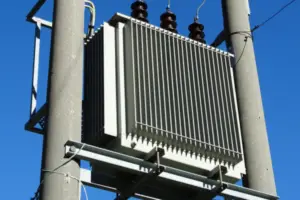Introduction
Electrical transformers play a crucial role in power generation and distribution systems. These devices transfer electrical energy from one circuit to another through electromagnetic induction.
However, like any other electrical equipment, transformers are prone to overheating, which can lead to costly repairs or even catastrophic failures.
In this article, we will explore the most effective ways to prevent electrical transformer overheating and the warning signs of overheating to look out for.
Table of Contents
Understanding Transformer Overheating
Transformers are designed to operate within a certain temperature range, and overheating can cause damage to their insulation and winding.
The most common cause of transformer overheating is excessive load, which causes the transformer to work harder than it should.
Other causes of transformer overheating include poor ventilation, malfunctioning cooling systems, and high ambient temperatures.
Preventing Transformer Overheating
- Proper Load Management
One of the most effective ways to prevent transformer overheating is by managing the load.
Transformers are designed to operate within a certain temperature range, and exceeding this range can cause overheating.
Proper load management involves monitoring the load on the transformer and ensuring that it operates within its rated capacity. This can be achieved by using load monitoring equipment, such as current transformers and power meters, to measure the load and adjust it as necessary.
- Adequate Ventilation
Another way to prevent transformer overheating is by ensuring adequate ventilation.
Transformers generate heat during operation, and this heat must be dissipated to prevent overheating.
Adequate ventilation allows air to flow around the transformer, dissipating the heat and keeping the temperature within the safe range.
Proper ventilation can be achieved by installing fans, ducts, and other cooling systems.
- Regular Maintenance
Regular maintenance is essential for preventing transformer overheating. Maintenance involves inspecting the transformer for signs of wear and tear, checking the cooling systems, and ensuring that the load is properly managed.
Regular maintenance can help identify and address potential issues before they escalate into major problems.
- Temperature Monitoring
Temperature monitoring is another effective way to prevent transformer overheating. Monitoring the temperature of the transformer can help identify when it is operating outside of its safe range.
Temperature monitoring can be achieved by using temperature sensors and other monitoring equipment.
- Proper Transformer Sizing
Proper transformer sizing is essential for preventing overheating. Transformers are designed to operate within a certain load range, and exceeding this range can cause overheating.
Proper transformer sizing involves selecting a transformer that is appropriate for the load it will be handling. This can be achieved by consulting with a qualified electrical engineer.
Warning Signs of Transformer Overheating
- Unusual Noise
Unusual noise coming from the transformer, such as humming or buzzing, can be a sign of overheating. The noise may be caused by the transformer’s core expanding due to the heat.
- Burning Smell
A burning smell is another warning sign of transformer overheating. The smell may be caused by the transformer’s insulation burning due to the excessive heat.
- Hot Surface Temperature
If the surface of the transformer feels hot to the touch, it may be a sign of overheating. However, it is important to note that some transformers are designed to operate at high temperatures, so this may not always be an accurate indicator of overheating.
- Reduced Efficiency
Overheating can also reduce the efficiency of the transformer. This can result in increased energy consumption and higher operating costs.
Conclusion
Preventing transformer overheating is essential for ensuring the safe and efficient operation of power generation and distribution systems.
Proper load management, adequate ventilation, regular maintenance, temperature monitoring, and proper transformer sizing are all effective ways to prevent transformer overheating. It is also important to be aware of the warning signs of overheating, such as unusual noise, burning smells, hot surface temperature, and reduced efficiency.
By following these preventive measures, transformer overheating can be avoided, and the transformer can operate efficiently and safely.
It is important to take proactive steps to prevent transformer overheating and to address any potential issues promptly.
Overheating can cause serious damage to the transformer, leading to costly repairs and downtime.
By implementing the best practices discussed in this article, you can ensure that your transformer operates within its safe temperature range and maintains its efficiency, contributing to a reliable and safe power system.



